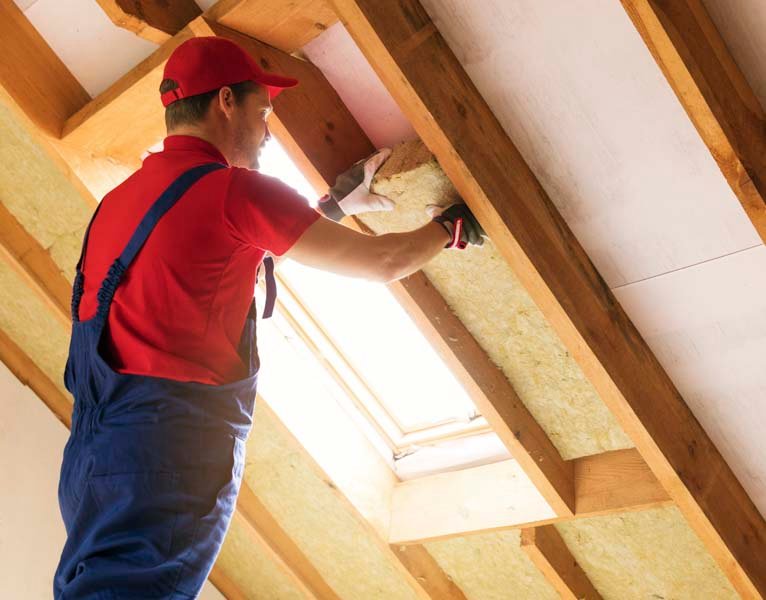
Homeowners are demanding more energy-efficient buildings due to increasing energy costs. Learn more about the various types of insulation used to achieve greater energy efficiency.
What is Residential Insulation?
Insulation in your home’s walls, ceilings, and floors helps maintain comfortable indoor temperatures. Insulation prevents heat transfer between the interior and exterior of your home and reduces the need for excessive heating and cooling, which lowers your energy bills.
In the past few decades, regulators have made many improvements in residential insulation practices. Stricter building codes are a driving force behind the advancements in insulation technology and installation standards, but more and more, the demand for energy-efficient homes is a contributing factor.
Why Insulation Is Important
Residential insulation offers homeowners numerous benefits. Here’s why insulating your home is important.
Energy efficiency and cost savings
In the last 20 years, residential electricity costs have skyrocketed, increasing almost 40%. Energy-efficient homes provide homeowners with hundreds of dollars in cost savings each year.
Comfort and temperature control
Maintaining a comfortable temperature in your home is much easier when there’s insulation. No matter your climate, it will be easier to heat and cool your home and maintain a static temperature if your walls, floors, and ceilings have proper insulation.
Environmental benefits
Increased energy efficiency is better for the environment, and as more people are increasingly concerned with problems like CO2 emissions and carbon footprints, home insulation plays a critical role.
Noise reduction
Noise reduction is an additional benefit of home insulation that people often overlook. Whether it’s blocking noise from outside your home or preventing room-to-room sound transmission, acoustic insulation helps absorb sound and vibrations, making your home more comfortable and private.
The Benefits of Having the Right Insulation
Learn more about the benefits of having the right insulation for your home.
Improved energy efficiency
Many homeowners who conduct energy audits of their homes recognize that the easiest way to lower their energy costs is to add extra insulation to the attic and roof. You can see substantial savings on your electric and natural gas bills when you adequately insulate your home.
Insulation is measured in terms of R-values, which refers to how well the material resists heat transfer. The higher the R-value, the better the thermal performance of the insulation.
Enhanced comfort and indoor air quality
The right insulation enhances the comfort of your home and improves the indoor air quality. Not only does insulation help your home maintain even temperatures, but it can also reduce problems like mold growth or act as a fire retardant.
Increased property value
Insulation is a factor in estimating a home’s potential resale value. In terms of return on investment, adding insulation is one of the best ways to increase property value, with a surprising 120% ROI.
10 Different Types of Home Insulation
From traditional fiberglass insulation to innovative solutions like aerogel, learn about 10 different building insulation types.
Fiberglass Insulation
Advantages: DIY-friendly, relatively inexpensive
The Owens Corning company invented fiberglass insulation in the 1930s, and today, it’s one of the most common insulation for homes. Before its invention, people used various natural products, including mud, wool, and straw.
Fiberglass insulation contains tiny glass fibers and comes in various forms. The most common form is blankets, which are batts or rolls that fit in between joists or studs. Manufacturers also produce it in loose-fill and rigid board forms.
Cellulose Insulation

Advantages: Good for blowing into finished attic spaces, deters insects
Cellulose insulation is made from recycled newspaper and other paper products. You blow it into walls and attic spaces, so it’s a good solution for adding R-value to finished areas of your home.
Cellulose insulation emerged in the 1950s and became popular over the next few decades after manufacturers added fire retardants and boric acid. The boric acid in cellulose makes it resistant to insects, so it’s an excellent choice in areas where termites are an issue.
Spray Foam Insulation
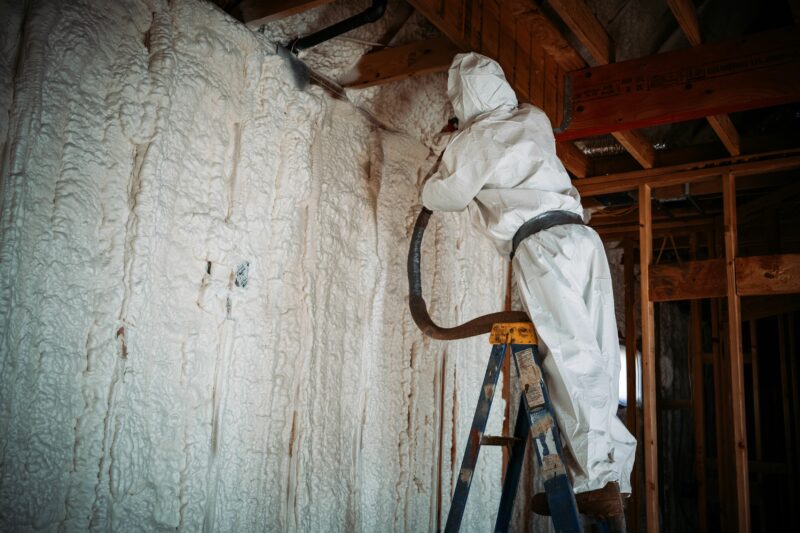
Advantages: Good for insulating around obstructions
Like fiberglass insulation, polyurethane spray foam insulation came on the market in the 1930s. However, it didn’t become widely used until the 1980s.
Spray foam insulation is gaining popularity because it’s effective. Moreover, you can use it in finished areas. Although it’s not as DIY-friendly as other types, some homeowners are installing it themselves. In large quantities, you apply it by mixing two chemicals under pressure.
Mineral Wool Insulation

Advantages: Easy to install
Mineral wool, also called rock or slag wool, was first used in the 1850s and was patented in 1875. It’s made from melted rock or slag that is spun into fibers.
Like fiberglass, it’s formed into easy-to-install types of batt insulation. However, one of the main disadvantages of mineral wool insulation is its price. It’s harder to find than other types of insulation and costs up to 50% more than fiberglass.
Polystyrene Insulation
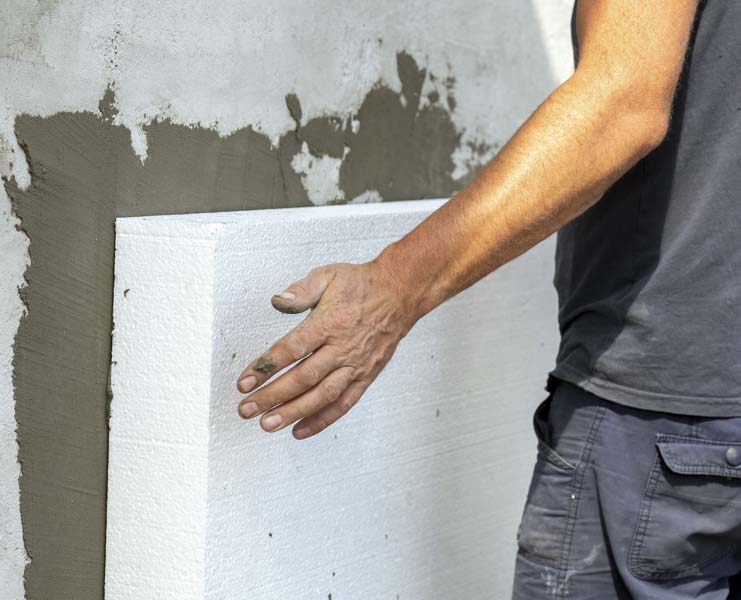
Advantages: High R-value for its thickness
Best known as Styrofoam®, Dow Chemical trademarked polystyrene in the 1950s. As insulation for buildings, it usually takes the form of rigid boards. It’s also heavily used in concrete applications.
Unfortunately, polystyrene isn’t as eco-friendly as other types of insulation, and it has limited potential for recyclability.
Radiant Barrier Insulation
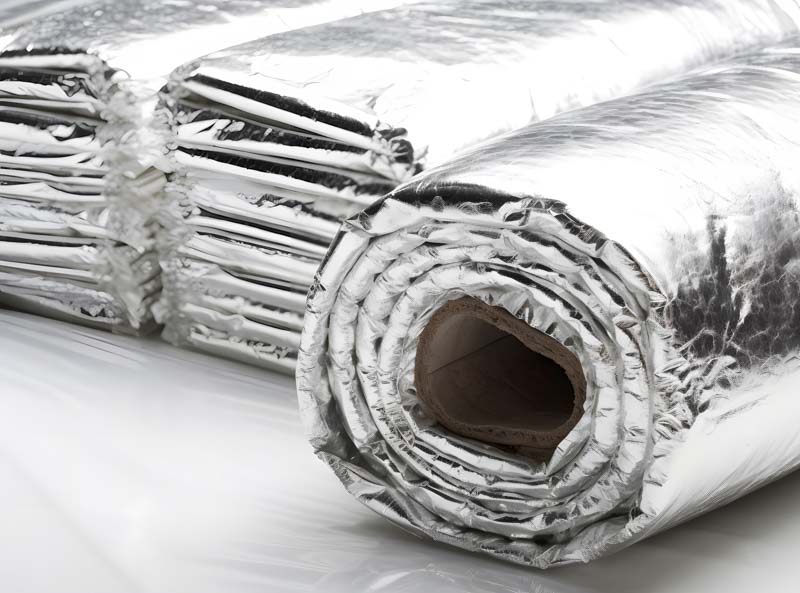
Advantages: Reflects heat, minimizes radiant heat transfer
Most types of insulation focus on conductive and convective heat transfer. However, radiant heat, conducted via electromagnetic waves, travels in a straight line directly from its source to another solid object.
Radiant barrier insulation is typically made from aluminum foil. It requires air space to be effective, but it stops the transmission of radiant heat gain, which is a significant problem from roofs in the summer.
Reflective Insulation
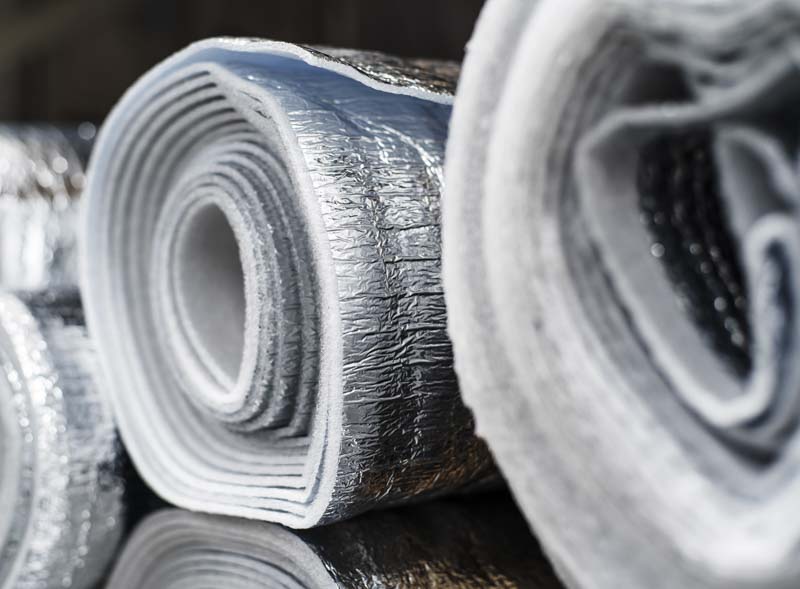
Advantages: Reflects heat, prevents conductive and convective heat transfer
Reflective insulation is similar to radiant barrier insulation, with one major difference. While radiant barrier insulation has a woven reinforcement core layer, reflective insulation has a thicker, insulating layer filled with air bubbles, foam, or fiberglass insulation.
Denim Insulation
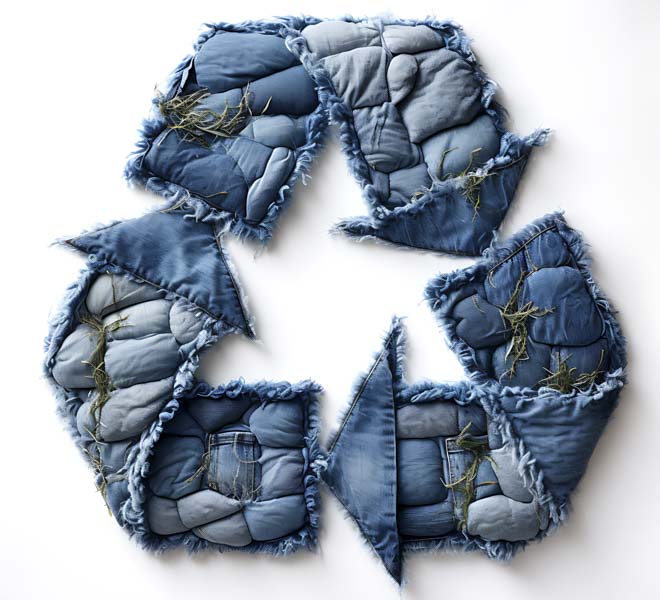
Advantages: Made from recycled materials, better acoustics, improved indoor air quality
The first company to start making used denim insulation was Cotton, Incorporated in 2006. Like cellulose, manufacturers treat it with boric acid, an insect and fire retardant.
Since denim contains no contaminants, including VOCs and formaldehyde, it’s better for your home’s indoor air quality. However, it’s slightly more expensive and may be hard to find in some areas.
Cotton Insulation

Advantages: Recyclable, renewable
Cotton insulation is a gentle material that makes an eco-friendly alternative to fiberglass insulation, which can irritate the skin, eyes, and lungs. Like fiberglass, cotton insulation is commonly made into batts of varying thicknesses with different R-values.
Aerogel Insulation
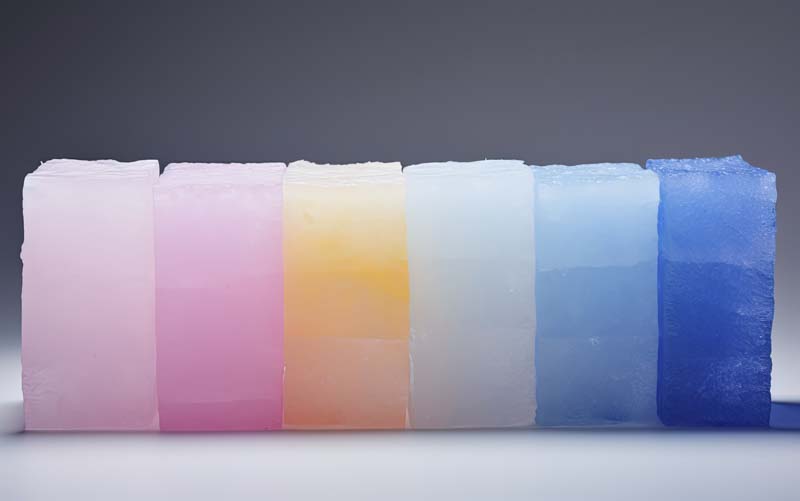
Advantages: Water repellent, resists temperatures to 1100°F (600°C)
Aerogels are synthetic materials made of silica gels. Despite what their name implies, aerogels are solid, made by replacing the liquid in gels with air.
Aerogel insulation is the world’s lightest solid and one of the finest types of insulation. Since it’s more expensive, it doesn’t often see use as a building material, but with continued innovation, that could change.
Tips for Choosing the Right Type of Insulation
Follow these tips for choosing the best type of insulation for your application.
Consider your climate and location
When choosing the best insulation for your home, consider factors related to your climate region, including humidity levels, temperature, and common pests.
You can easily determine how much insulation your home needs by researching recommended home insulation R-values depending on where you live.
Check out our guide to home insulation for warm climates!
R-value and insulation thickness
The thickness of insulation is only one factor that determines its R-value. Since some good insulating materials reduce heat transfer better, they don’t need to be as thick to provide the same insulating value.
How much space you have in your walls and attics will determine how much R-value you can achieve with different types of insulation. You can maximize your space with materials like reflective foam board insulation.
Sustainability and environmental impact
To some extent, all insulation is a green solution for your home and will reduce your carbon footprint. However, some types of insulation are inherently more eco-friendly than others.
Ask the following questions to determine if various types of insulation are environmentally friendly:
- Is it made from recycled or sustainable materials?
- Is it recyclable at the end of its life cycle?
- What is the R-value?
- How long does it last?
Installation methods and costs
Different types of insulation require various installation methods, and some are more expensive to install than others. The easiest time to install insulation is during building construction, and if you’re retrofitting insulation installations, you may have limited choices.
Hire a professional or DIY?
Your average homeowner can’t install all insulation types. Some require special tools, skills, knowledge, or equipment. For example, cellulose must be installed with a blower machine.
Spray foam insulation is another type of insulation best installed by a professional. While renting the equipment is possible, it takes a significant amount of knowledge and skill to apply.
Additional Considerations When Choosing Insulation for Homes
Consider the following additional factors when selecting the best insulation for your home.
Moisture and vapor barriers
Consider the ramifications of moisture or vapor when installing insulation, particularly in attics and crawl spaces.
Fire resistance and safety
Fire resistance should be a priority when selecting the best type of insulation for your home. Some products, like fiberglass insulation, are naturally fire-resistant. Others must be treated with fire retardant to reduce their flammability.
Parts of the home
The most important parts of your home to insulate include your attic, basement, ceilings, floors, and walls. Different types of insulation will reduce heat transfer better in certain areas. For example, reflective insulation is the best insulation for walls and ceilings.
How much attic insulation do you need? We have the answer!
Soundproofing properties
Mineral wool is the best insulation for soundproofing, but if you’re looking for the most effective insulation combined with affordability, blown-in fiberglass insulation is a good choice.
Longevity and maintenance
Most home insulation types will last 80 to 100 years when properly cared for. However, in some climates, products like cellulose insulation will become less effective after 30 years. Balance the recyclability with the longevity if you’re looking for an environmentally friendly solution.
Some insulation applications are maintenance-free, such as fiberglass batts installed in your walls. However, you should visually inspect blown-in insulation in your attic at least once a year to avoid problems with roof leaks and pests.
5 FAQs about Types of Insulation
How do I know which insulation type is best for my home?
You can choose from many types of home insulation, and your decision will depend on several factors. When selecting the best house insulation, consider the following factors:
- Climate and R-value
- Flammability
- Allergens
- Moisture resistance
- Installation costs and complexity
- Building codes
- Budget
Is one type of insulation more environmentally friendly than others?
One of the most environmentally friendly types of insulation material is cotton since it’s made from recyclable and renewable materials. When it comes to choosing green insulation materials, cellulose, mineral wool, sheep’s wool, and recycled denim are all good choices. To some extent, insulation is generally eco-friendly because it reduces energy consumption.
What is the typical lifespan of different types of insulation materials?
Most modern insulation is durable and long-lasting, with life expectancies of 80 to 100 years. This may seem like a long time, but if you own or are purchasing an older home, it pays to consider the possible degradation of your insulation materials.
Can I install any type of insulation myself, or should I hire a professional?
Some types of insulation are DIY-friendly to install, and others are not. The easiest types of insulation to install are foam board or fiberglass batts, but unless you’re remodeling or building new construction, you’ll probably choose something that’s better suited for finished areas, like cellulose or spray foam insulation, which requires special equipment, skills, and tools to install.
Are there any government incentives or rebates for upgrading insulation?
Insulation rebates are available from state and federal agencies. Under the Inflation Reduction Act, federal income tax credits for energy efficiency are available until 2032. The limit was increased to a maximum yearly allowance of $3,200. It also pays to check for state energy tax credits.






